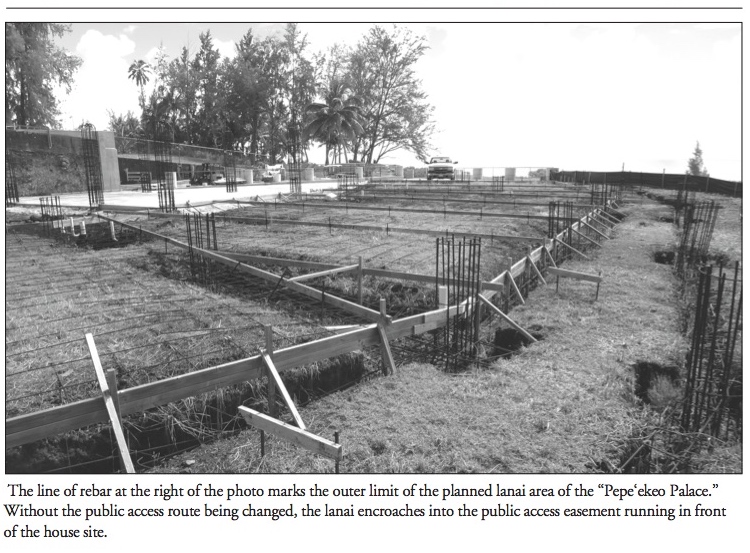Scott Watson, builder of the “Pepe`ekeo Palace,” just won’t take “no” for an answer. Having twice tried, and twice failed, to get the Hawai`i County Windward Planning Commission to amend conditions of subdivision approval for the lot on which Watson and partner Gary Olimpia are building a mansion, Watson and Olimpia are once more taking their argument to 3rd Circuit Court.
It’s not the first time.
In 2013, attorney Steve Strauss sued on behalf of the landowners, arguing that the state alone had the ability to set building setbacks at distances greater than 40 feet. For that reason, he argued, the county special management area for the subdivision, requiring all construction to be at least 40 feet from the top of the sea cliff, “violates state law.”
That litigation is in limbo at the moment, but the last time a judge ruled in the case, in August 2013, it was to deny Strauss’s motion for summary judgment. Back then, Judge Glenn Hara found that the county could indeed establish a setback of more than 40 feet during the subdivision approval process. The conditions established when in the 2004 SMA permit legally bound the lot owner, Hara found.
In the most recent case, Strauss makes the identical arguments concerning the county’s ability to establish setbacks greater than the minimum established by state law, but also throws into the mix the Planning Commission’s failures to provide findings of fact and conclusions of law to justify the decision to deny the SMA amendment.
The commission heard the application first on September 17. At that meeting, it took no vote to grant or deny the request and so the application was deemed denied. Strauss asked for a reconsideration, which was granted on November 20. The outcome was the same.
Strauss argues that both the original hearing and the hearing on the request to reconsider the application amounted to contested cases, and that therefore the commission was obligated to enter separate findings of fact and conclusions of law to justify the action – or non-action, in this case.


